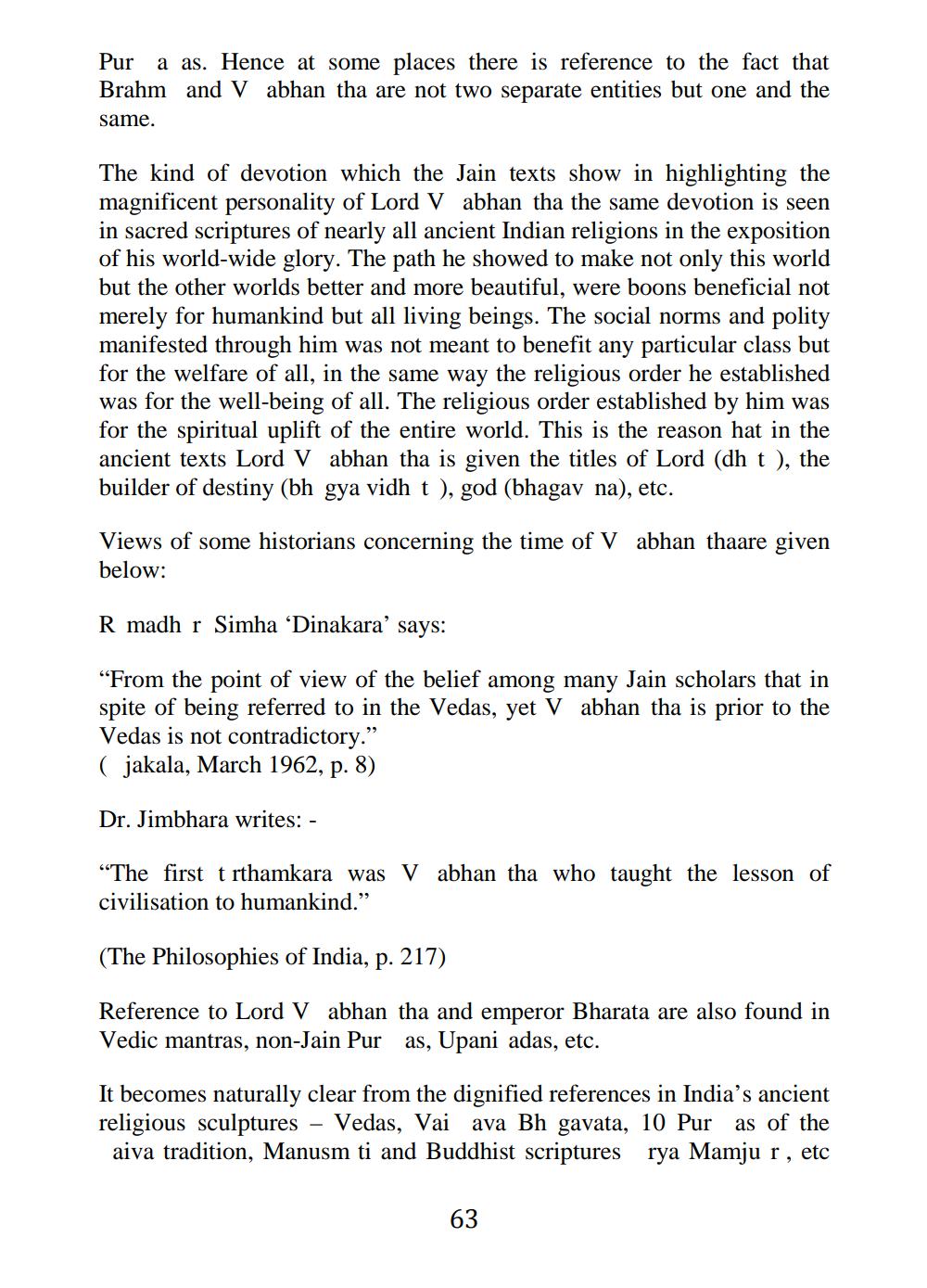________________
Pura as. Hence at some places there is reference to the fact that Brahm and V abhan tha are not two separate entities but one and the same.
The kind of devotion which the Jain texts show in highlighting the magnificent personality of Lord V abhan tha the same devotion is seen in sacred scriptures of nearly all ancient Indian religions in the exposition of his world-wide glory. The path he showed to make not only this world but the other worlds better and more beautiful, were boons beneficial not merely for humankind but all living beings. The social norms and polity manifested through him was not meant to benefit any particular class but for the welfare of all, in the same way the religious order he established was for the well-being of all. The religious order established by him was for the spiritual uplift of the entire world. This is the reason hat in the ancient texts Lord V abhan tha is given the titles of Lord (dh t ), the builder of destiny (bh gya vidh t ), god (bhagav na), etc.
Views of some historians concerning the time of V abhan thaare given below:
R madh r Simha 'Dinakara' says:
"From the point of view of the belief among many Jain scholars that in spite of being referred to in the Vedas, yet Vabhan tha is prior to the Vedas is not contradictory." ( jakala, March 1962, p. 8)
Dr. Jimbhara writes: -
"The first t rthamkara was V abhan tha who taught the lesson of civilisation to humankind."
(The Philosophies of India, p. 217)
Reference to Lord V abhan tha and emperor Bharata are also found in Vedic mantras, non-Jain Puras, Upani adas, etc.
It becomes naturally clear from the dignified references in India's ancient religious sculptures – Vedas, Vai ava Bh gavata, 10 Puras of the aiva tradition, Manusm ti and Buddhist scriptures rya Mamju r, etc
63




